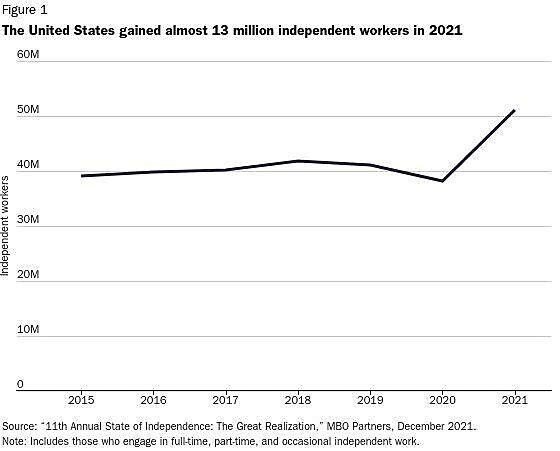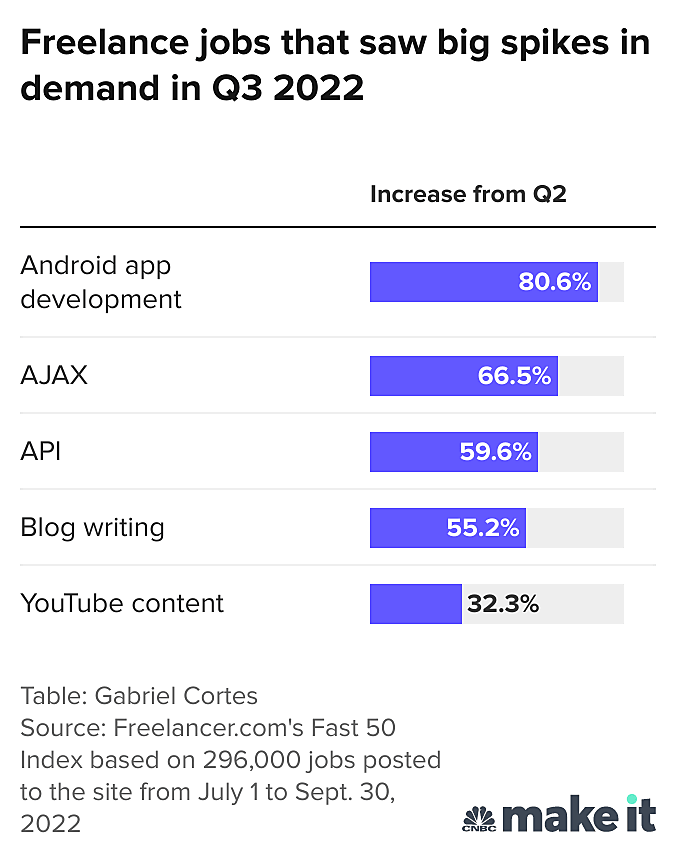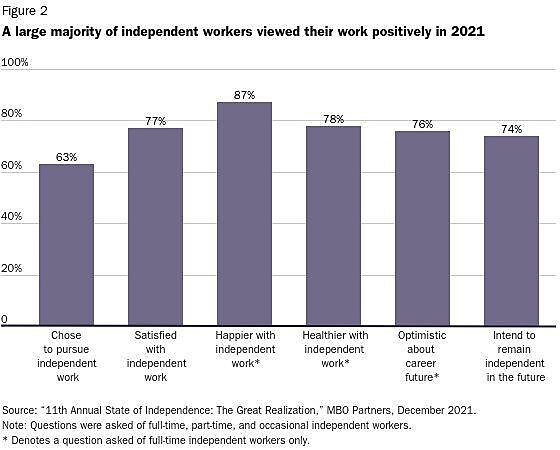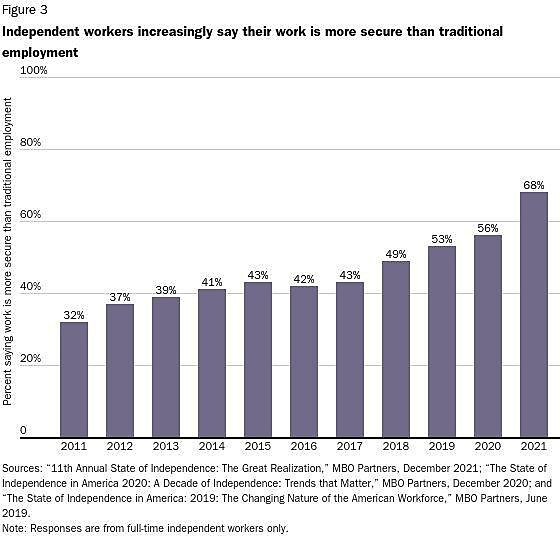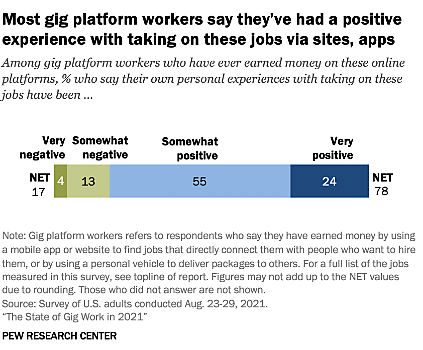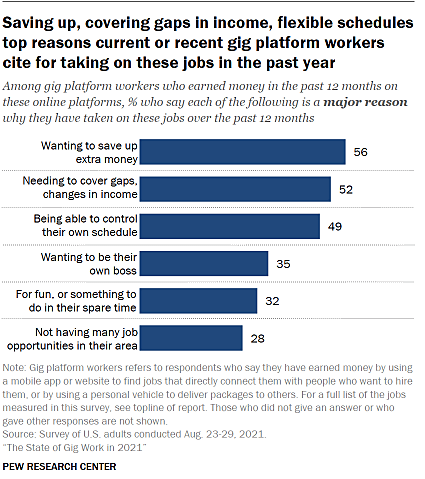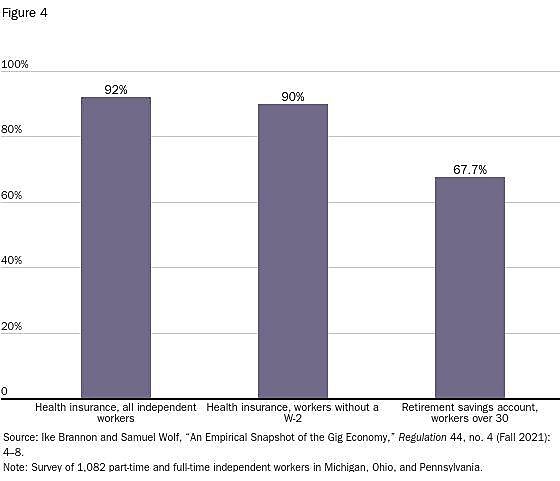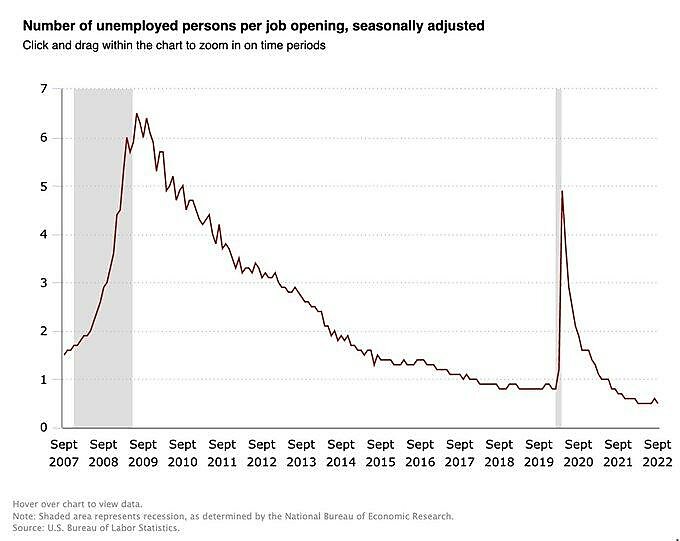Congressional Democrats’ “PRO Act,” which the House passed last year, would have embedded the ABC test into federal law—a longtime Democrat and labor union priority. But since the legislation stalled in the Senate (and there’s an election next week), the Department of Labor’s proposed rule seeks to do as much ABC’ing as possible via a regulatory re-interpretation of FLSA. The rule doesn’t explicitly include the ABC test (probably because, legally speaking, it can’t), but as Erik Sherman recently showed in Forbes, it’s obviously pushing that way. For example—
- The proposed rule would expand the current definition of “control exerted by the employer” to include “detailed discussions of … scheduling, supervision, price-setting, and the ability to work for others,” while “not limiting control to control that is actually exerted.” This is essentially the “A” prong of the ABC test, broadening the definition of “control” to reclassify as many workers as possible as employees.
- The rule would consider “whether the work is integral to the employer’s business rather than whether it is exclusively part of an ‘integrated unit of production.’” This change would consider work that is separate from a company’s main functions but is still a core part of the organization’s purpose as the work of an employee, not an independent worker. Think of a freelance writer at a magazine. This is essentially the “B” prong of the ABC test.
As Sherman and others note, the rule also is vague and open to interpretation, meaning more Labor Department enforcement actions and more economic uncertainty (which itself would discourage independent work). Regardless, most everyone agrees that the rule’s practical result would be that many American workers—including ones who want to be independent contractors—will be reclassified as employees.
Just how many workers isn’t exactly clear, but it’s probably a lot. Economists Robert Shapiro and Luke Stuttgen estimate that a nationwide ABC test would’ve reclassified more than 4 million workers as employees, but that estimate is probably low because they assumed there were only 17 million independent workers in the country. As already noted, MBO Partners calculated 51 million independent workers in 2021—three times the Shapiro/Stuttgen number. So a back-of-napkin estimate shows that as many as 13 million workers could be reclassified as employees under a nationwide ABC rule.
The Labor Department rule doesn’t go full ABC, but it’s certainly moving that way—and affecting millions of workers in the process.
Documenting the Harms of Restrictions on Independent Work
Unfortunately, recent analysis shows that this forced reclassification could have significant economic harms—including for the very workers the proposed rule is supposedly protecting. Much of this stems from the fact that traditional employees are more than 20 percent more expensive for companies to employ than independent workers, thanks in part to FLSA. Compliance and mandated benefits, such as health insurance, drive up costs, especially for smaller firms. Thus, firms that are unable or unwilling to pay more to rehire previously independent workers could respond by raising prices or cutting the positions entirely.
We’ve seen this play out in California. In 2020, for example, Uber estimated that AB 5 would increase costs by $3,625 per driver in California, could double the price of rides, and would reduce rideshare availability by up to 60 percent. Right after AB 5 passed, Vox terminated more than 200 freelance writers, and many other freelancers were canned around the same time. Thus, California scrambled to exempt more than 100 occupations from AB 5 since 2019, including rideshare drivers, writers, and photographers. As we’ve discussed, however, many other occupations haven’t been spared —including about 70,000 “owner-operator” truck drivers who have been prohibited since July from continuing to work independently. (Experts have recently suggested that—instead of just caving and becoming (unionized) employees—many truckers have started their own companies to remain independent.) My Cato colleague Walter Olson recently documented other victims: “Workers hurt by AB 5 included many tutors, performers in music and theater, plumbers, nurse practitioners, writers, photographers, contract software developers, and many others.”
And California isn’t the only state dealing with ABC blowback. In New Jersey, for example, newspapers are livid over a new regulation classifying deliverers as employees, a change that could annually cost already struggling news companies $3 million each. In Massachusetts, the attorney general has been attempting to reclassify rideshare drivers as employees, despite 83 percent of drivers preferring to remain independent workers.
Some of this has also already played out nationally, as Olson explained:
We’ve … seen this at the federal level in its previous go‐round as the Obama administration’s 2015 initiative along the same lines (although this version would go even further). As we noted then, the intended restrictions on franchising and subcontracting would endanger the thriving white‐van culture of small skilled contractors by which so many tradespeople now find upward mobility, trading it instead for clock‐punching at some company division. And it would force tech, creative, and startup firms that currently outsource functions like cafeteria, janitorial, and landscape maintenance to take on much wider direct employment responsibilities they may not be particularly well equipped to handle.
Given these issues, it’s no surprise that Shapiro and Stuttgen estimated that a nationwide ABC test could lead to the termination of 3.8 million independent work positions—a number that, again, could be much higher given the prevalence of independent work today.
And for what?
Summing It All Up
Tens of millions of Americans engage in independent work—either full-time or as a side hustle—and the vast majority of them (us) do so voluntarily because they (we) prefer it to traditional employment. Surely, not every independent worker is happy with his situation, nor is every U.S. business utilizing contractors on the up and up. But the vast majority of them are, and the Department of Labor rule does nothing to distinguish those millions from the problematic few. As such, the rule would needlessly inject the federal government into the voluntary contractual decisions of millions of workers and companies, denying many of them a mutually beneficial arrangement to which both parties willingly agreed. That’d be a particularly galling and out-of-touch result, given that the U.S. labor market remains (per data released just yesterday) piping hot:
